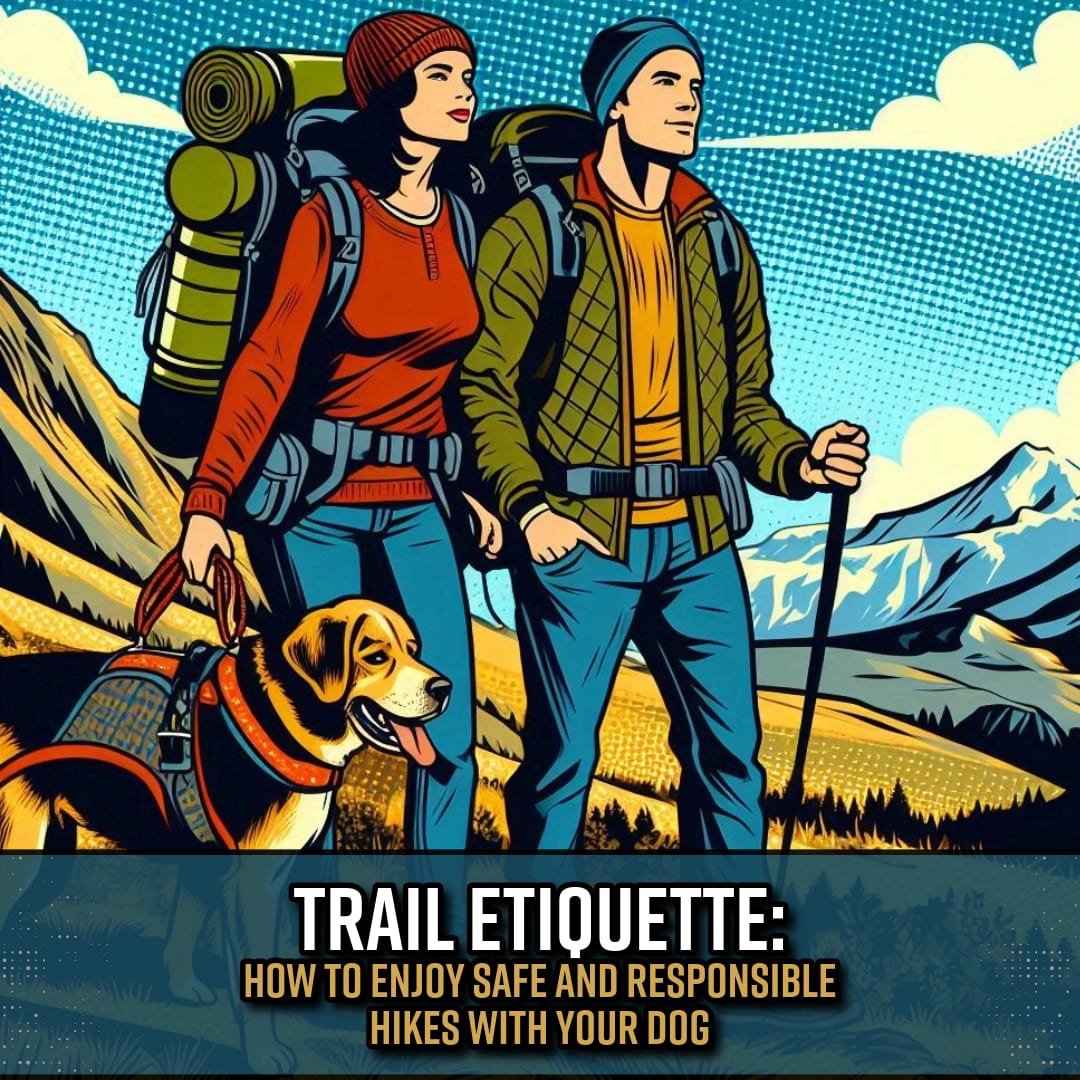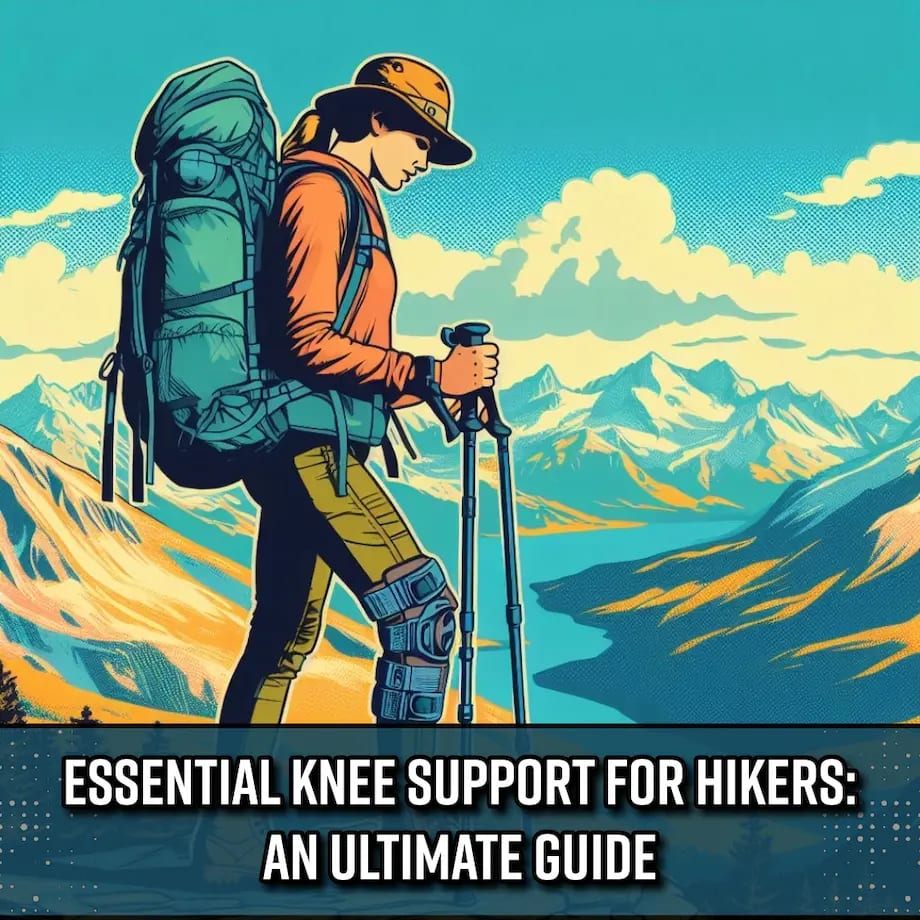How to Keep Your Feet Dry When Hiking in the Rain
- Last Updated:
Confession time. As long as it’s not too cold or windy I like hiking in the rain. I love the way the rain sounds and the way the air smells. The only thing that can ruin my mood is when my feet get wet while hiking. It’s uncomfortable and can lead to blisters, foot damage, and even hypothermia. So, to save you that discomfort we are going to cover all our best tips to keep your feet nice and dry while hiking in the rain.

TLDR;
If you are in a hurry and just want the bottom line best hiking boots to keep you feet dry here you go. Merrell boots are an excellent and affordable choice and our family loves them. They aren’t as sexy as Lowa or Timberland hiking boots but they are a great all-around pick.
Key Takeaways
- Properly waterproof your hiking boots using water-resistant coatings or waterproof membranes like Gore-Tex.
- Wear gaiters to protect your lower legs and ankles from rain and prevent water from flowing into your boots.
- Consider using waterproof socks or boots with waterproof membranes for added protection.
- Accept that your feet may get wet to some extent and focus on minimizing damage by wearing quality socks and taking breaks to dry out.
- Protect your feet from damage caused by wetness with foot balm, choosing comfortable footwear, and proper sock layering.
Tips for Hiking in the Rain: Preventing Wet Feet
When it comes to hiking in the rain, keeping your feet dry is a challenge that many outdoor enthusiasts face. While it may be difficult to completely avoid wet feet, there are several tips and strategies you can follow to minimize discomfort and potential damage. Here are some expert suggestions for preventing wet feet while hiking in the rain:
- Choose the Right Footwear. Investing in waterproof hiking boots or shoes is essential for rainy hikes. Look for options with a water-resistant coating or waterproof membranes like Gore-Tex. Additionally, wearing gaiters can provide an extra layer of protection against rainwater seeping into your boots.
- Use Waterproof Socks or Liners. Consider wearing waterproof socks or liners to further protect your feet from moisture. Waterproof socks are designed to keep water out while still allowing your feet to breathe. These can be worn over a pair of moisture-wicking hiking socks for added comfort.
- Embrace the Inevitable. Accepting that your feet may get wet to some extent can help alleviate frustration during rainy hikes. By mentally preparing for the possibility of wet feet, you can focus on minimizing damage and discomfort. Consider packing extra pairs of dry socks and changing them whenever possible.

Waterproof, Water-Resistant, or Breathable Hiking Boots
When shopping for footwear there are three main types of hiking boot that can keep your feet dry. Waterproof boots are treated with a special coating that prevents water from entering the boot. Water-resistant boots aren’t entirely waterproof, but they will repel water for a short period of time. Breathable boots will allow moisture to escape easily so they dry out quickly, but won’t prevent your feet from getting wet in the first place.
The best type of boot for hiking in the rain depends on the conditions you will be hiking in. If you are expecting heavy rain or snow, then you will need a pair of waterproof boots. However, if you are only expecting light rain or drizzle, then you may be able to get away with a pair of water-resistant boots. And if you are hiking in warm weather, then you may want to choose a pair of breathable boots, even if they are not waterproof.
Waterproof Boots

Timberland Men's White Ledge Mid Waterproof Hiking Boot

Timberland Women's Waterproof Chocorua Trail Boot
Waterproof boots should be your go-to choice when the elements are truly against you. They are the best choice for hiking in heavy rain, deep snow, or areas prone to flooding, or for activities that require walking through streams or crossing wetlands. Waterproof boots provide superior protection against water immersion, ensuring your feet remain dry and warm even in the harshest conditions. Their durability makes them ideal for rugged terrain and challenging weather, making them a worthwhile investment for serious outdoor enthusiasts.
Benefits
- Keeps your feet dry in the rain, snow, and mud
- Provides excellent protection from the elements
- Durable and long-lasting
Drawbacks
- Can be hot and sweaty in warm weather
- Not as breathable as water-resistant or breathable boots
- Can be expensive
Water-Resistant Boots

Ahico Men's Hiking Boots Water Resistant Walking Trekking Camping Snow Boots Breathable Outdoor Trail

Eddie Bauer Women's Astoria Water Resistant Ankle Hiking Boot
Water-resistant boots are a great general choice and our go-to hiking boots for fall hiking are water-resistant. They are lighter weight and more breathable than waterproof boots. Being water-resistant they are good enough for light rainfall and puddles, but if you are walking through snow or in heavy rain your feet will eventually get wet. As always, check the weather forecast and trail conditions to make sure these boots will be enough for the conditions you will be hiking in.
Benefits
- More breathable than waterproof boots
- More affordable than waterproof boots
- Still provides some protection from the elements
Drawbacks
- Will not keep your feet dry in heavy rain or snow
- Not as durable as waterproof boots
Breathable Boots

KEEN Men's Targhee Vent Low Height Breathable Hiking Shoes

KEEN Women's Targhee Vent Mid Height Breathable Hiking Boots
We almost always pick breathable boots in the summer because when it’s hot we think it’s more important for our boots to dry quickly and our feet to sweat less. This is a personal opinion but most people we talk to agree with us. Another benefit of a breathable boot is the weight. They are noticeably lighter than waterproof or water-resistant boots.
Benefits
- Most breathable of the three types of boots
- Comfortable in warm weather
- Relatively inexpensive
Drawbacks
- Will not keep your feet dry in the rain
- Not as durable as waterproof or water-resistant boots
Waterproof Your Boots
When hiking in the rain, one of the most important steps to keeping your feet dry is to properly waterproof your boots. There are several options you can consider for waterproofing your boots, depending on the material and type of boots you have. For leather boots, you can apply a water-resistant coating or use waterproof membranes like Gore-Tex. These membranes create a barrier that prevents water from seeping into the boots, keeping your feet dry even in wet conditions.
If you have synthetic boots, there are also DIY methods you can try. Applying oil or wax to the boots can help repel water and keep your feet dry. Additionally, you can use waterproof sprays that are specifically designed for synthetic materials. These sprays create a protective layer that keeps water out, ensuring your feet stay dry during your rainy hikes.

RED MOOSE Waterproof Spray for Shoes and Boots - Water and Stain Repellent Our waterproofing spray creates a tough, impenetrable water barrier that not only prevents stains but keeps out the rain and wet weather. Keep your feet dry on dewy mornings and prevent puddles & splashes from soaking through to socks.
Properly waterproofing your boots is crucial in ensuring your feet stay dry and comfortable during your outdoor adventures. By choosing the right method for your boots and applying the necessary treatments, you can enjoy hiking in the rain without worrying about wet and uncomfortable feet.
Waterproofing Tips
- Choose boots with a water-resistant coating or waterproof membranes like Gore-Tex.
- For leather boots, apply oil or wax to create a barrier against water.
- For synthetic boots, use waterproof sprays designed for synthetic materials.
- Regularly check and reapply waterproofing treatments to maintain effectiveness.
More Tips From Freewheeling Kiwi
Wear Gaiters
When hiking in wet conditions, wearing gaiters is essential for preventing wet feet. Gaiters are protective covers that go over your lower leg and ankles, creating a barrier between your feet and the rain. They help to keep water from flowing into your boots, keeping your feet dry and comfortable. The best thing is they are small enough to be packed away until you need them.
When choosing gaiters, look for features that enhance their performance in wet conditions. Multi-layer construction, a water-resistant exterior, and a waterproof membrane lining are all important factors to consider. These features ensure that the gaiters repel water effectively and keep your feet dry. We highly recommend packing a pair of gaiters when you go hiking in cold or rainy weather.

Hikenture Gaiters for Hiking Waterproof, Leg Gaiters with Upgraded Zipper Design Say goodbye to wet and dirty legs while hiking through challenging terrains! Our leg gaiters are your trusted companions, designed to conquer even the most rugged conditions, from deep snow to heavy rain, thick shrubs, and dusty trails.
Key Features to Look for in Gaiters:
- Velcro or Storm Flap Closures: These closures provide a secure seal and prevent water from entering through the top of the gaiters.
- Lace Hooks: Lace hooks allow you to attach the gaiters to your hiking boots, ensuring they stay in place during your hike.
- Adjustable Stirrup Straps: Stirrup straps can be adjusted to fit snugly under your boots, preventing the gaiters from riding up and exposing your ankles to the rain.
Use Waterproof Socks or Membrane
When it comes to hiking in the rain, keeping your feet dry is essential for a comfortable and enjoyable experience. One effective way to achieve this is by using waterproof socks or boots with waterproof membranes. These options provide an added layer of protection against moisture, keeping your feet dry and preventing discomfort.
Waterproof Socks
Waterproof socks are specifically designed to keep your feet dry during rainy hikes. They are typically worn over a pair of hiking socks and provide a barrier that prevents water from penetrating through to your feet. Brands like Randy Sun offer waterproof seamless socks that are effective at keeping your feet dry, even when submerged in water. It’s important to note that waterproof socks are not breathable, so wearing them over a pair of hiking socks helps manage moisture and sweat.

RANDY SUN Waterproof Breathable Socks, [SGS Certified] Unisex Novelty Skiing Trekking Hiking Wading Trail Socks 1 Pair
Boots with Waterproof Membranes
Another option for ensuring dry feet while hiking in the rain is to choose boots with waterproof membranes. Popular waterproof membrane brands include Gore-Tex and eVent. These membranes allow water vapor to escape while preventing water from seeping into the boots, keeping your feet dry and comfortable. When selecting boots, look for those with reliable waterproof membranes for optimal protection against wet conditions.
By incorporating waterproof socks or boots with waterproof membranes into your hiking gear, you can confidently tackle rainy trails without worrying about wet feet. These options provide an extra layer of defense against moisture, allowing you to enjoy your outdoor adventures to the fullest.
Before You Go …
That should be everything you need to know to keep your feet dry or waterproof your hiking boots. Before you go I would like to suggest checking out Simple Fall Hiking Tips To Keep Your Family Warm And Safe for even more tips to stay nice and warm while hiking.

FAQ
Q: How can I waterproof my hiking boots?
A: There are different options for waterproofing your boots. You can choose leather boots with a water-resistant coating or waterproof membranes like Gore-Tex. DIY methods like applying oil or wax to leather boots or using waterproof sprays for synthetic boots are also effective.
Q: What are gaiters and how do they help keep feet dry?
A: Gaiters are covers that go over your lower leg and ankles, protecting your feet from rain and preventing water from flowing into your boots. Properly worn gaiters with multi-layer construction, a water-resistant exterior, and velcro or storm flap closures can help keep your feet dry in wet hiking conditions.
Q: Are waterproof socks a good option for keeping feet dry while hiking in the rain?
A: Yes, waterproof socks can be a popular option for keeping your feet dry during rainy hikes. They should be worn over a pair of hiking socks and brands like Randy Sun offer waterproof seamless socks that do a good job of keeping your feet dry even when submerged in water.
Q: Should I accept that my feet will get wet while hiking in the rain?
A: Despite your best efforts, keeping your feet completely dry may not be possible. Many hikers accept that their feet will get wet to some extent and focus on minimizing the damage caused by wet feet.
Q: How can I protect my feet from damage caused by wetness?
A: To minimize damage, wear two pairs of hiking socks, choose quality socks made of merino wool or synthetics, apply foot balm to keep moisture out, opt for trail runners instead of boots for better comfort, take off shoes and socks during longer breaks, and put on waterproof socks at camp to protect your feet from wet boots.
If You Found This Helpful, Please Share:
By Summer and Bill

Summer and Bill are the dynamic duo behind Adventureite.com, a blog dedicated to inspiring others to explore the great outdoors. With a combined lifetime of experience traveling and adventuring across America, they have a wealth of knowledge to share. From hiking to camping, kayaking to travel, Summer and Bill are passionate about helping others discover the beauty of the natural world.
 Adventureite
Adventureite








